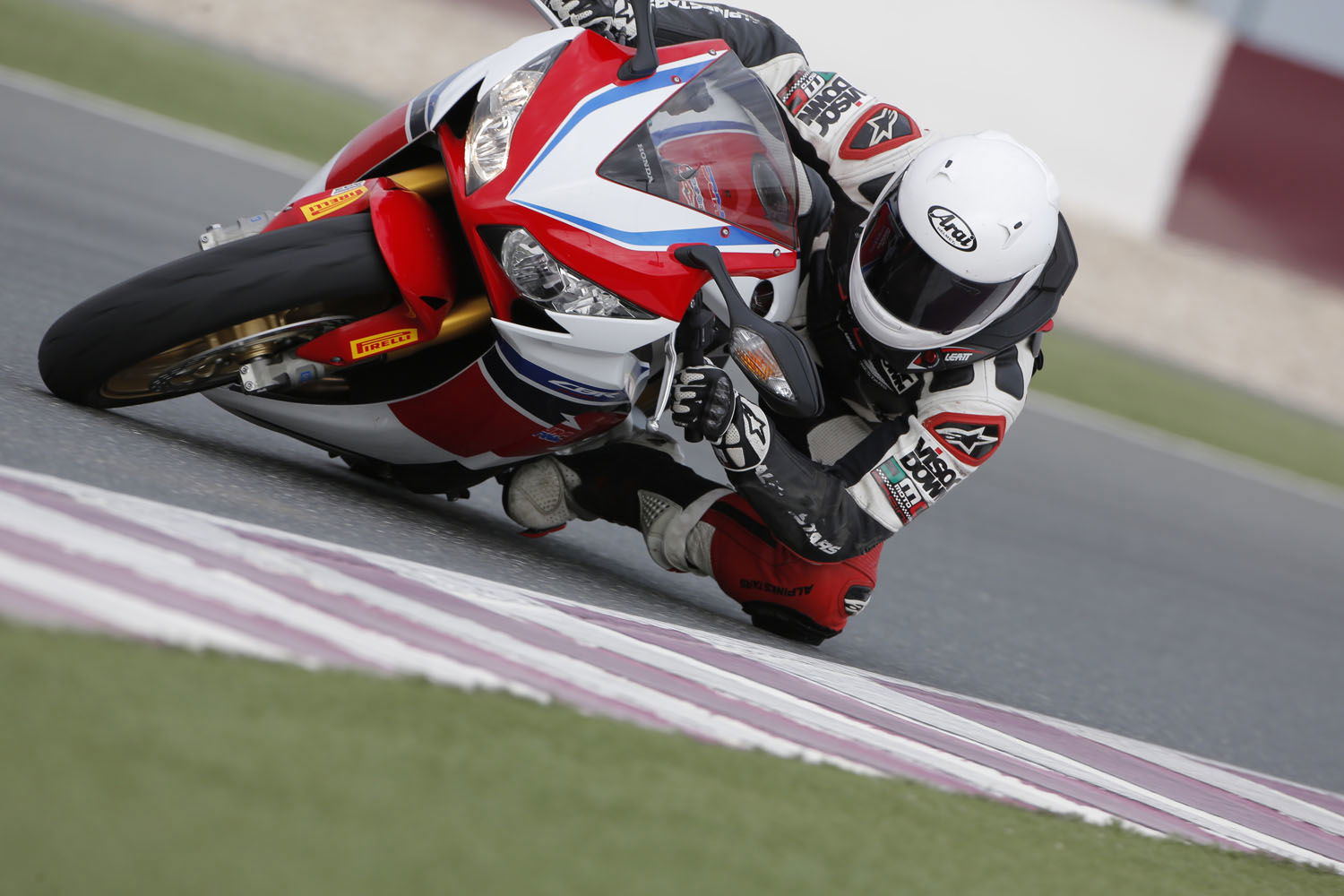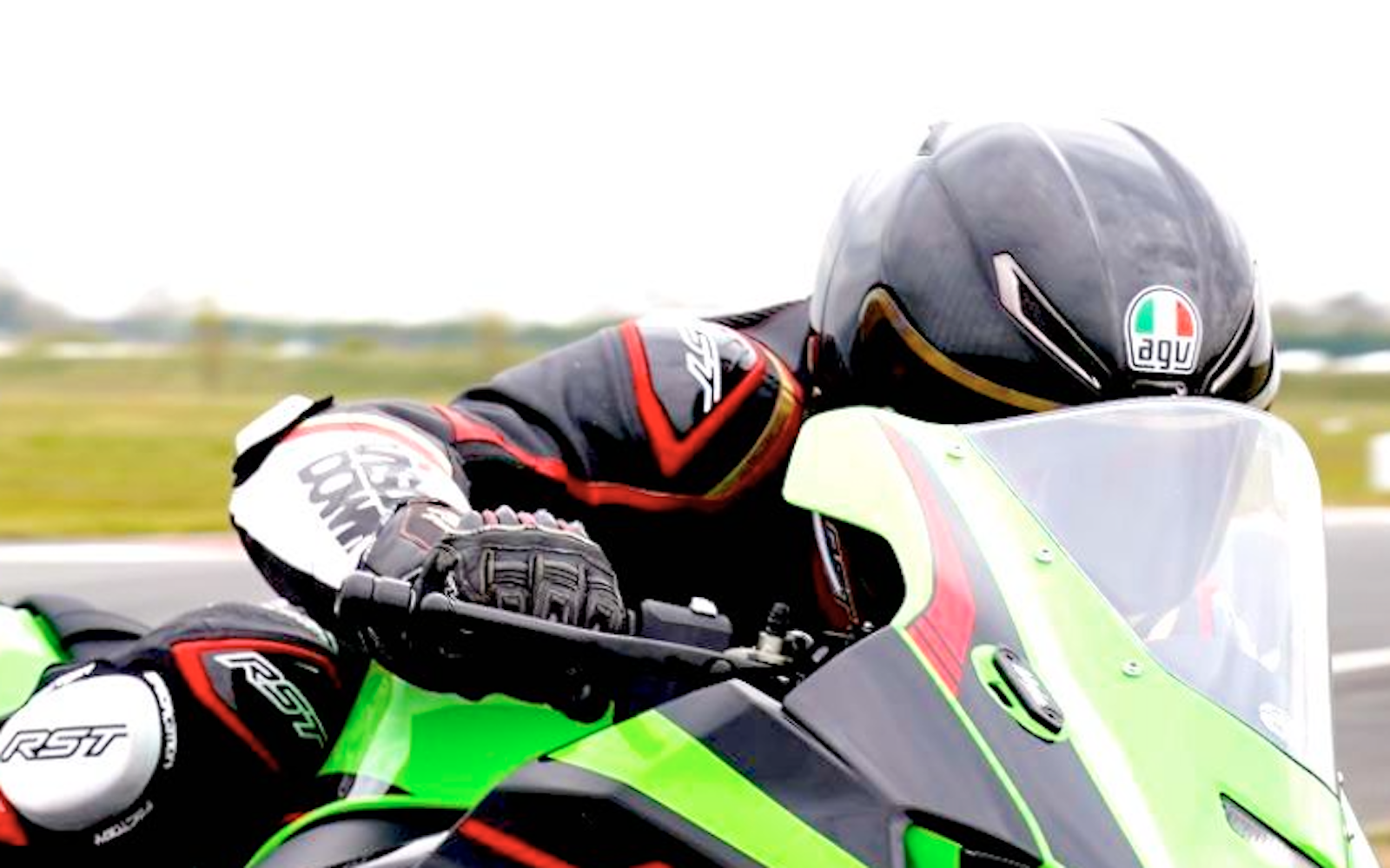Ducati Monster: All you need to know about the smash hit pocket rocket
A raw, V-twin roadster originally launched as a 900 in 1993, the Ducati Monster has been one of the brand's most popular models, spawning a family of its own and being repeatedly updated and modernised.

The Ducati Monster is probably the most famous and successful Italian V-twin roadster of all. Originally launched as a 900 in 1993 as something of a ‘parts bin special’ using components from other bikes, it proved such a hit for its combination of accessibility, affordability, classic V-twin character including a wonderfully evocative rumble from its exhaust, that it spawned a whole family of variants and successors which live on to this day.
Although the latest versions have now swapped out its original signature air-cooled V-twin motor for a modern liquid-cooled unit, plus also the tubular steel trellis frame for a twin spar aluminium item, the classic Italian style and engaging performance remains. And, with well over 350,000 examples sold over 30 years, the Monster is sure to live on and continue to be updated as the definitive Italian roadster.
History of Ducati Monster
- Ducati Monster 900/1000, 1993-2005
- Ducati M600/620ie/695, 1994-2007
- Ducati Monster 750/800, 1996-2003
- Ducati Monster S4/S4R/S4RS, 2001-2008
- Ducati Monster S2R 800/1000, 2005-2007
- Ducati Monster 696, 2008-2014
- Ducati Monster 1100, 2009-2014
- Ducati Monster 796/797, 2010-2020
- Ducati Monster 821, 2014-2020
- Ducati Monster 1200, 2014-2020
- Ducati Monster, 2021-date
- Next Ducati Monster
| Year | Model | Capacity | Power | Seat height | Dry weight | Top speed |
| 1993-2005 | 900-1000 | 904-992cc | 73-84bhp | 770-803mm | 184-189kg | 118-135mph |
| 1994-2007 | 600-695 | 583-695cc | 53-73bhp | 770mm | 174-168kg | 119-124mph |
| 1996-2003 | 750-800 | 748-803cc | 64-73bhp | 770mm | 178-179kg | 118-128mph |
| 2001-2008 | S4-S4RS | 916-998cc | 101-130bhp | 803mm | 193-177kg | 149-153mph |
| 2005-2007 | S2R | 803-992cc | 77-95bhp | 800mm | 179kg | 130-135mph |
| 2008-2014 | 696 | 696cc | 79bhp | 770mm | 161kg | 130mph |
| 2009-2014 | 1100 | 1078cc | 95bhp | 810mm | 169kg | 135mph |
| 2010-2020 | 796/797 | 803cc | 87-73bhp | 800-805mm | 167-175kg | 125-120mph |
| 2014-2020 | 821 | 821cc | 112bhp | 785-810mm | 179.5kg | 140mph |
| 2014-2020 | 1200 | 1198cc | 135-152bhp | 785-830mm | 180-182kg | 150mph |
| 2021-date | 937 | 937cc | 111bhp | 820mm | 166kg | 140mph |
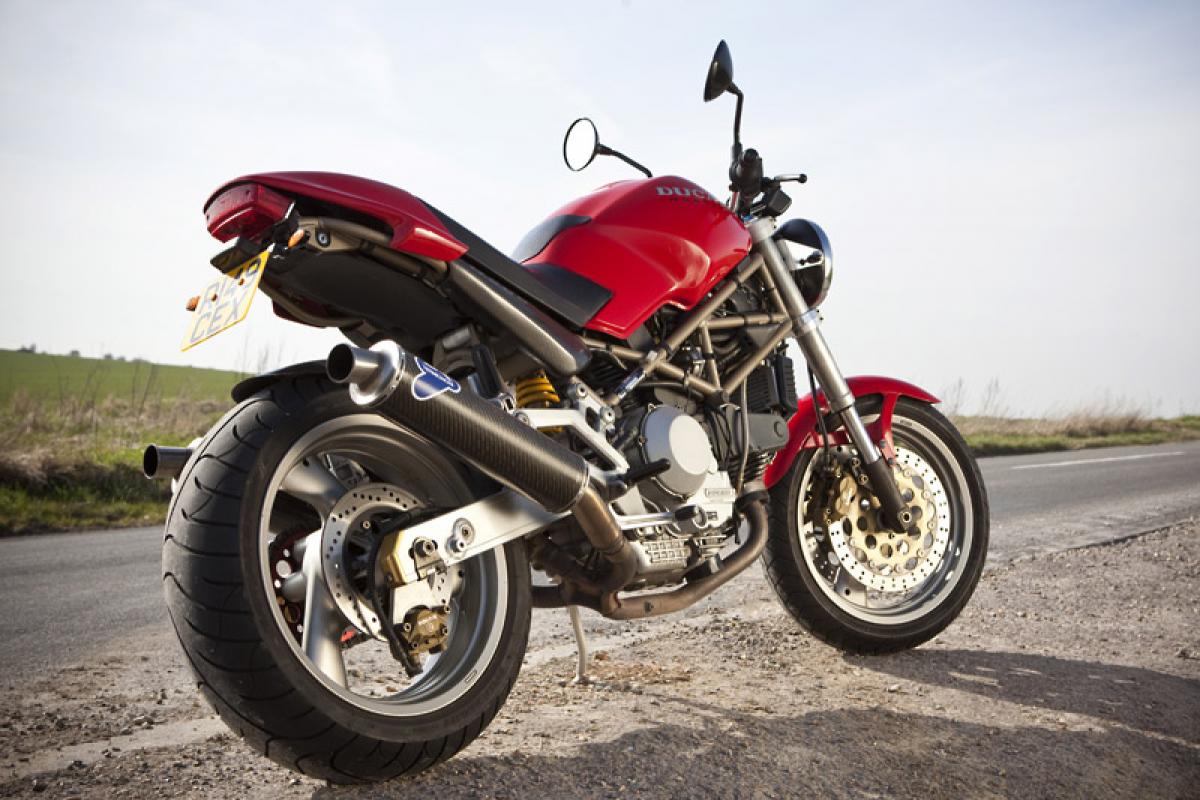
Ducati Monster 900/1000, 1993-2005
The story of the creation of the original Ducati Monster is well-known: it was a pet project of young Ducati designer Miguel Galluzzi, in being an aggressive roadster born from a 73bhp, air-cooled, 900SS V-twin engine and swingarm, 888 frame and 750SS forks with styling all its own.
The result looked great, had sprightly handling, gutsy, characterful performance and (for a Ducati at least) was reasonably affordable, too. As a consequence it was a big hit, folklore telling us the much-needed cash flow it generated saved the whole of Ducati. Today, it’s still an evocative, stripped back roadster with a purity and simplicity (single dial anyone?) modern bikes can’t match.
Good ‘93/‘94 originals are now appreciating classics with prices often over £5K although later variants, including the 1997 ‘Cromo’, 1998 ‘S’ (with fully adjustable suspension), fuel-injected 2000 ‘ie’ and 2003 1000 are all better bikes, often for less money.
_0.jpg?width=1600)
Ducati M600/620ie/695, 1994-2007
The immediate success of the original M900 led to its rapid follow-up with the first ‘junior’ model – the M600 Monster – the following year. Based on the 900, the 600 instead used the 53bhp motor from the 600SS with slightly lower spec cycle parts including a single front disc in place of the 900’s dual set-up.
The result, although hardly fast was, at just £5K (when the 900 was £7500), temptingly affordable, stylish, easy to ride both for novices and, crucially women riders, thanks to its low seat, and proved an alluring entry point into Ducati ownership.
Unsurprisingly, it, too, proved a huge hit Europe-wide and cemented the Monster’s evolution from being just one model into a whole family of machines. An even more affordable Monster 620 ‘Dark’ version followed in 1997.
A slighter larger, fuel-injected Monster M620ie arrived in 2002 (along with the bikini faired ‘S’ version), while the first ‘baby Monster’ line was rounded off with the enlarged again 695 in 2006.
None today, due to their basic spec, uninspiring performance and sheer numbers available, are particularly collectable, but they do remain the most affordable way into Monster ownership, decent examples being available from as little as £2250.
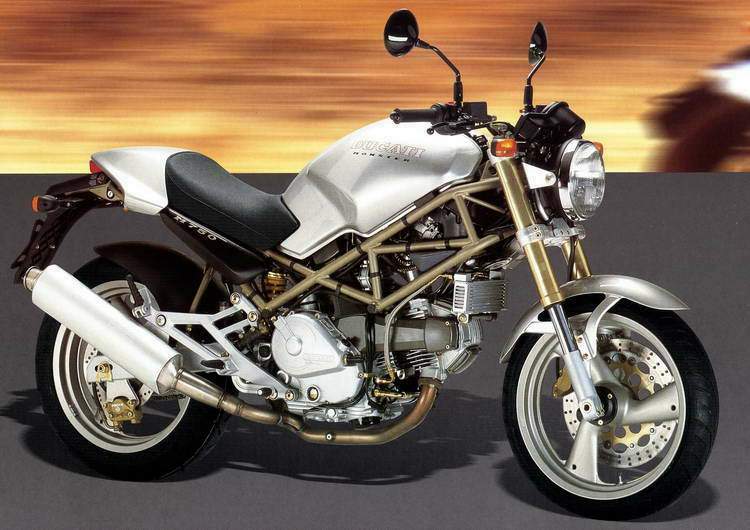
Ducati Monster 750/800, 1996-2003
Sitting between the 900 and 600, the Monster M750 was created by simply using the 750SS motor in place of the 600 and 900 versions and was cruelly disparaged at the time for being neither one thing or another. As a result it wasn’t a success, despite also being offered in budget ‘Dark’ trim in 1997 then revised in 800 form in 2003, and is one of the shortest-lived and rarest Ducatis of all.
We prefer to be a little more generous, however. Its 62bhp was significantly more than the flat 600 yet without being as ragged and raw as the 900.
Later, 1998-on versions got twin discs, fuel injection and a more distinct identity with a regal silver paint option and there’s something classy about the ‘M750’ on its side panels, too. With decent examples available under £3500 it remains, for our money, something of a ‘connoisseurs’ choice’.

Ducati Monster S4/S4R/S4RS, 2001-2008
The turn of the new millennium and the arrival of more potent, liquid-cooled rivals such as the Cagiva Raptor, prompted Ducati to build its first ‘performance Monster’, the S4, by levering-in the liquid-cooled, four-valve engine from the 916 superbike – although in truth it was the slightly detuned, 101bhp version used in the ST4 sports-tourer.
It also gained uprated suspension and in 2002 was offered in limited edition ‘Foggy Rep’ colours to celebrate Carl Fogarty’s WSB success. Today this is one of the most collectable of all Monsters. In 2003 Ducati upped the ante again with the 113bhp Monster S4R, which featured a distinctive, 998-alike, single-sided swing arm with matching stacked exhausts.
While in 2007 this was uprated again, with Ohlins suspension, lightweight Marchesini wheels and a full 129bhp from its 999 Testastretta engine to become the S4RS, by far the wildest Monster so far. Today, while a fairly standard S4 can be had for as little as £2600, an S4R is around £5K while the S4RS ‘holy grail’ ranges from £7K to £13K.
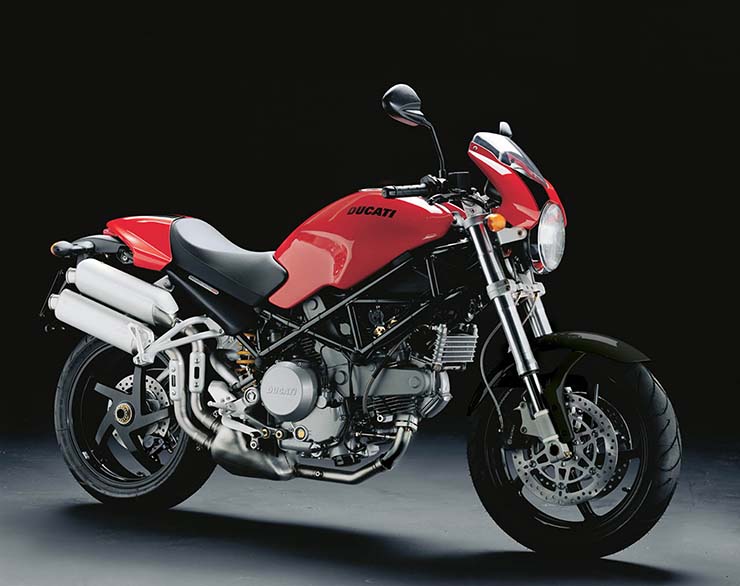
Ducati Monster S2R 800/1000, 2005-2007
If you liked the racy, single-sided swing-arm style of the S4R but not its heady performance and price, in 2005 Ducati gave us the S2R – basically an S4R lookalike but powered by a more hum-drum, air-cooled, two-valve 803cc V-twin producing 77bhp.
Despite its obvious appeal – racy looks but easier manners and price – it wasn’t a success and, despite also being offered as a 1000 from 2006, was deleted after just two years. Today, however, that blend of racy looks with real world performance and affordability added to a reasonable dose of exclusivity, makes it a tempting buy with good Ducati Monster S2R 800s available from as little as £3700 and 1000s for a shade over £4K.
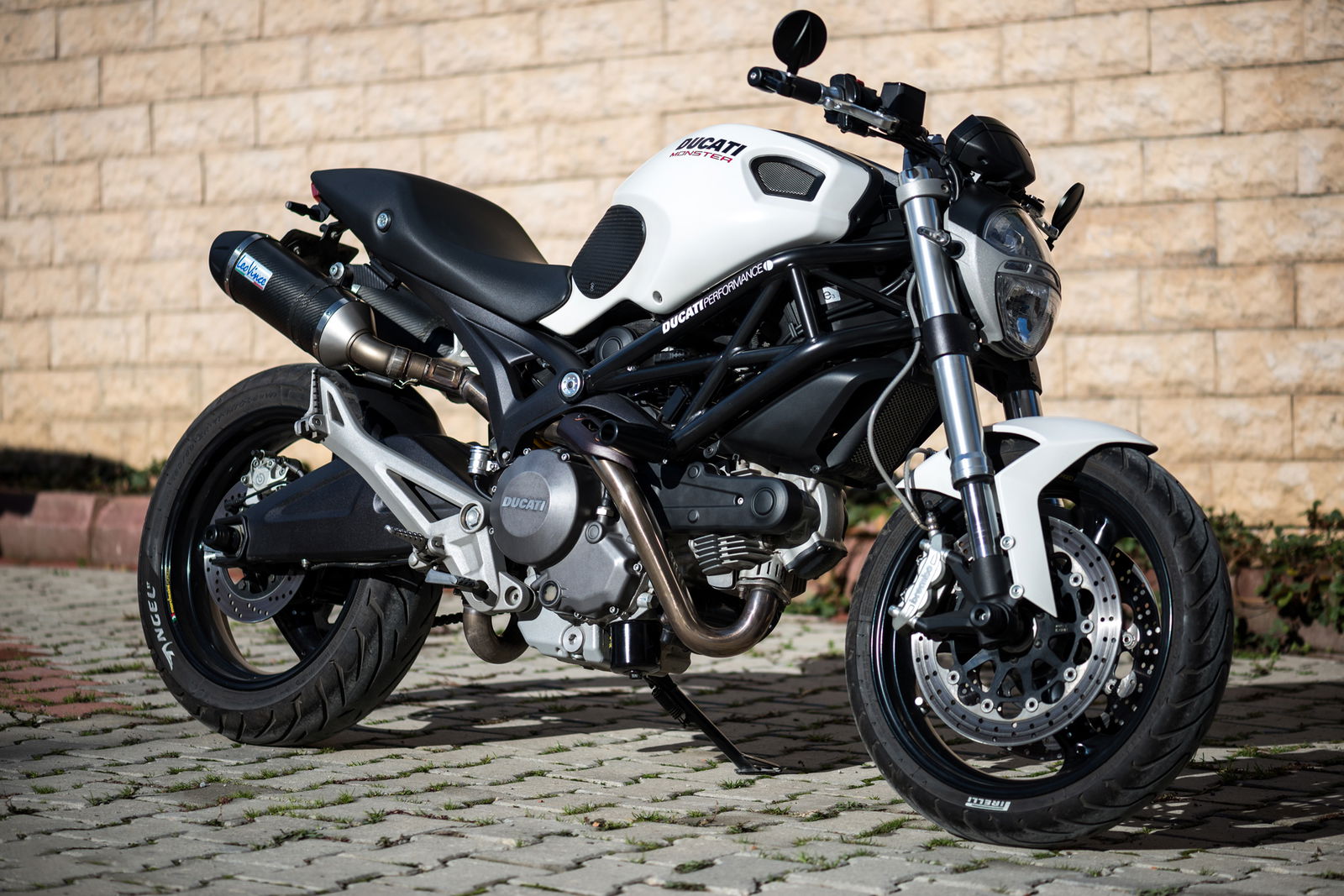
Ducati Monster 696, 2008-2014
Despite all its model variations, by 2008, after 15 years in production, the Monster remained essentially unchanged and was overdue a major update – and this, starting with the ‘baby’ 2008 Monster 696 then joined by the big 1100 a year later, was the result.
An all-new machine distinguished by its underseat exhausts and stubby, squat stance, its engine was actually only a mild update on the preceding 695, although it produced 9% more power (at 68bhp). But its chassis, complete with twin radial brakes, was all-new and now featured cast aluminium sections along with its characteristic, but now larger diameter, tubular steel trellis.
Also all-new was sharper styling, fully-digitised LCD instruments and a funky, ‘flat’ headlamp. Today, a decent example can be had for around £3500 with low-milers a shade over £4K.
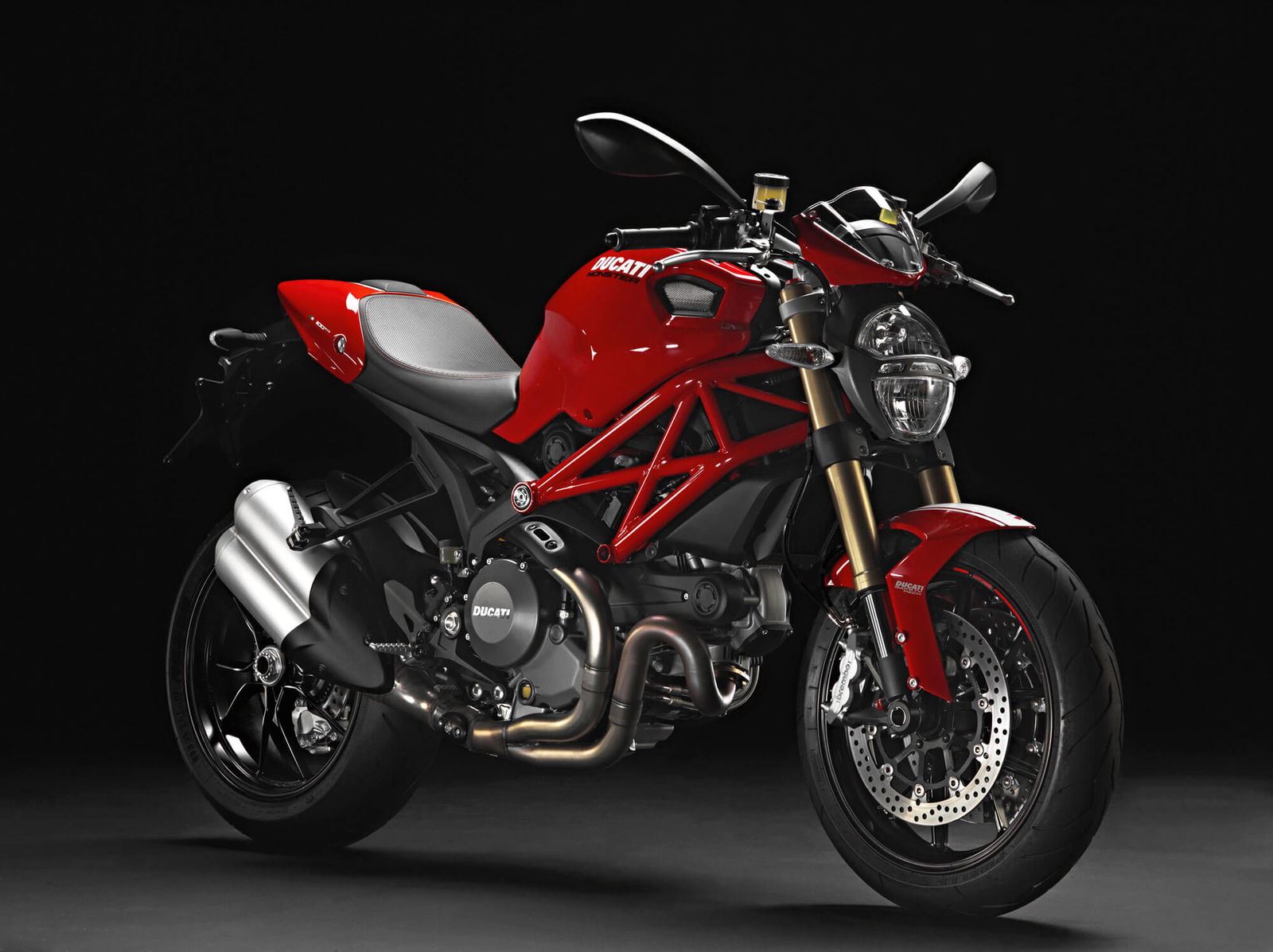
Ducati Monster 1100, 2009-2014
With the second generation Monster introduced with 2008’s 696, Ducati followed it up with its new, second generation, big-bore, flagship a year later – the 2009 Monster 1100. With similar, ‘underseat exhaust’ styling to the 696 the biggest visual difference was the 1100’s single-sided swing arm.
However, where the 696’s engine was only a mild update on that of the 695, the 1100’s 1078cc V-twin was significantly reworked, produced 95bhp in a seamlessly grunty way and was to prove the last – and arguably best – of the air-cooled big Monsters.
A higher spec ‘S’ version, introduced alongside the base version, was more desirable still thanks to its Ohlins suspension, lashings of carbon fibre and lightweight wheels, while an ‘Evo’ version, with 5bhp extra, electronics in the form of traction control and ABS and better suspension came in 2011.
All, today, are rightly regarded as the ultimate air-cooled Monsters but if we had to pick one it’d be the 2013 ‘20th Anniversary’ Evo in commemorative 1993 livery which, today, will set you back around £7500.
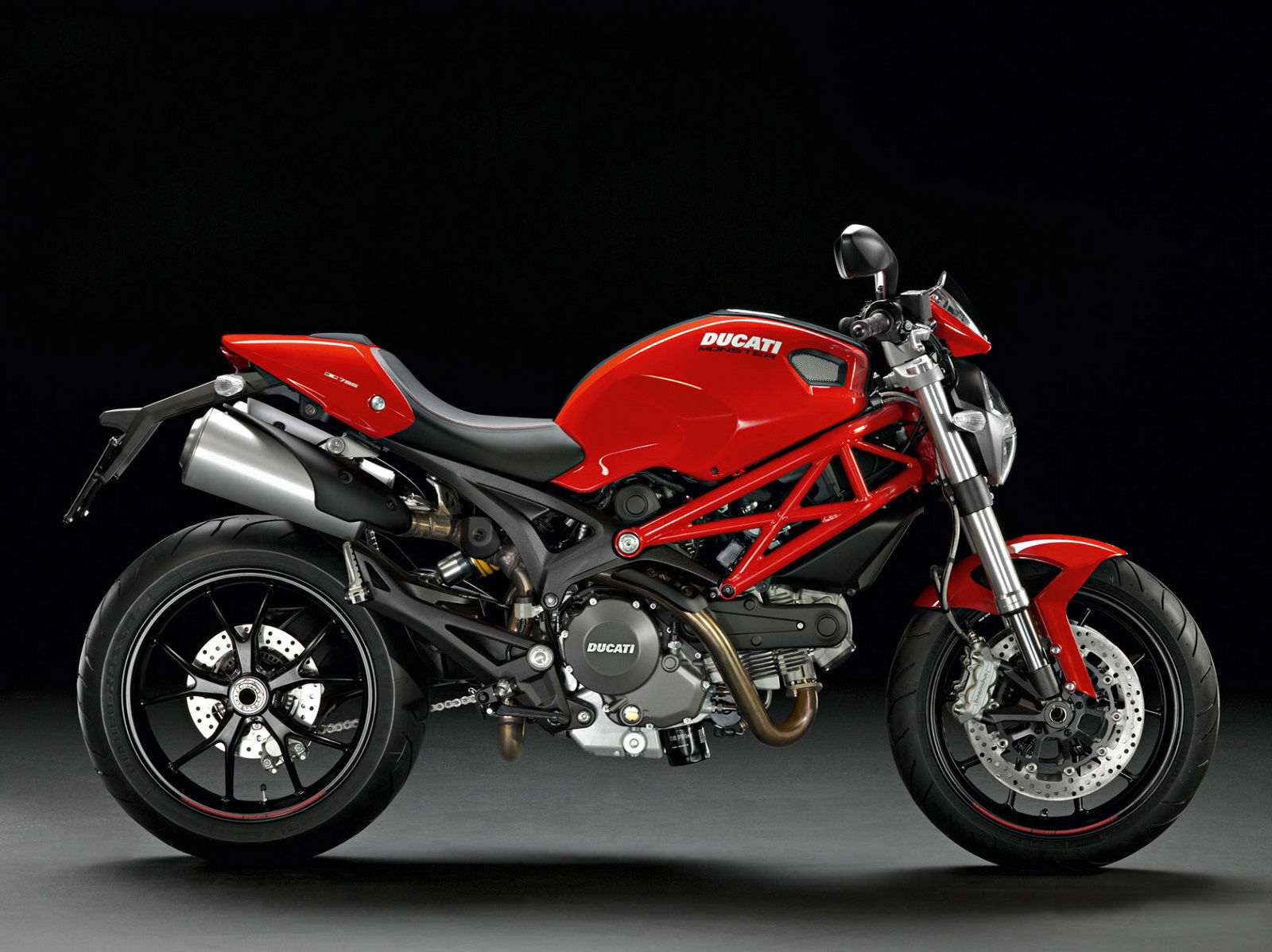
Ducati Monster 796/797, 2010-2020
2010 saw the introduction of a new, mid-range second generation Ducati Monster 796, echoing the arrival of the M750 in the late 1990s.
This time around it used an 803cc air-cooled motor producing 87bhp (mid-way between the 696’s 68bhp and the 1100’s 95) but with a combination of the 1100’s single-sided swing arm and slightly lower-spec, non-adjustable forks etc. It was a good compromise, too.
On the slight downside, the 796 was also where Ducati’s Monster model names got a bit confusing.
The 796 (actually 803cc) along with the more junior 696 lived on as the last of the air-cooled, smaller Monsters until 2014 when both were replaced by the new liquid-cooled 821 as Ducati’s ‘entry-level’ Monster.
To make things even more confusing, Ducati later introduced the 2017 Monster 797 (also 803cc), a new, air-cooled, 74bhp model derived from the 796 intended as the new entry-level Monster. Got that? Good.
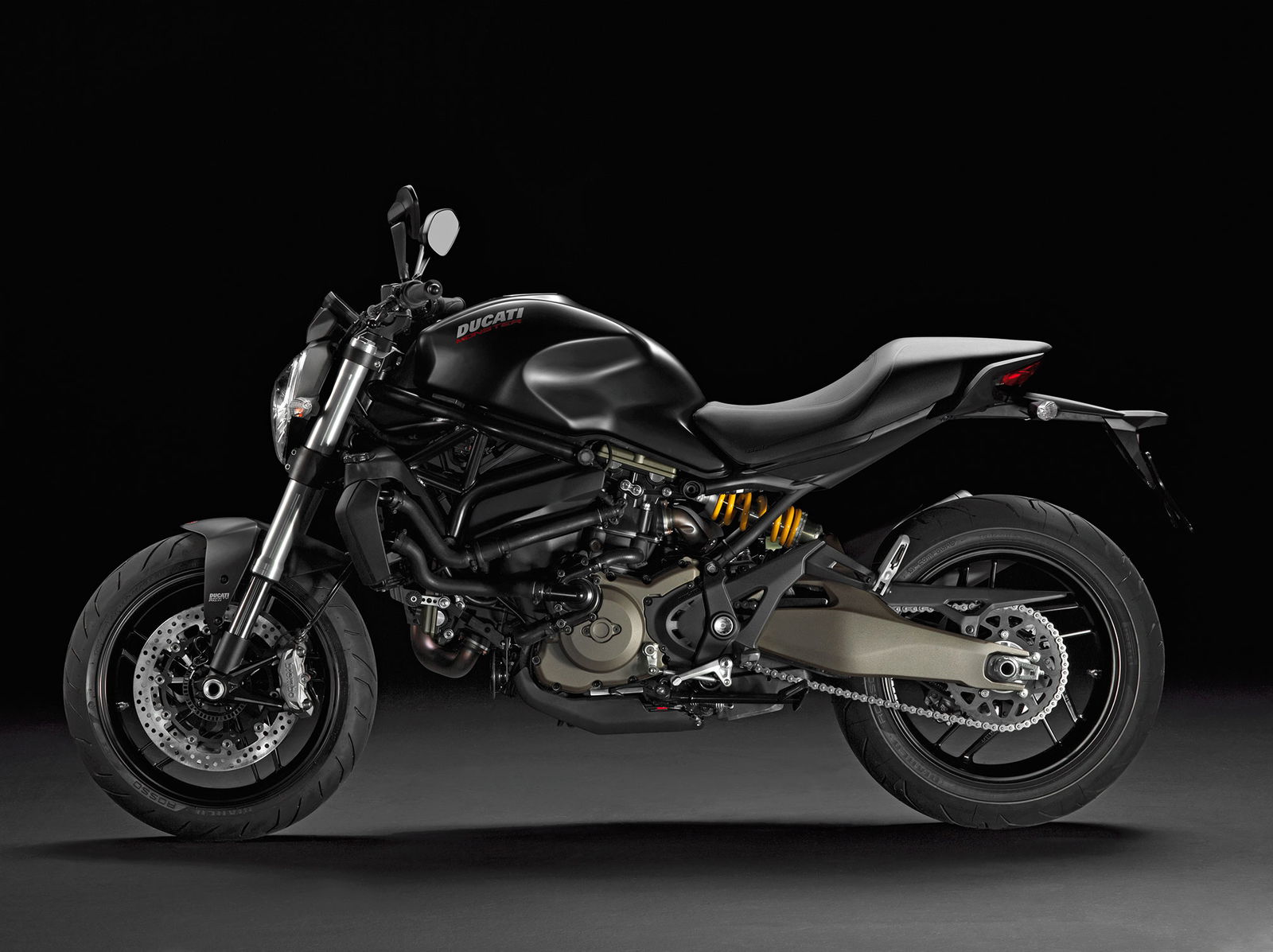
Ducati Monster 821, 2014-2020
In 2014 it was all-change again for Ducati’s Monsters with the third generation signalling the end of its use of air-cooled engines (although the 2017 797 saw their return) updating to liquid-cooled, four-valve units for both its mid-range/entry-level bikes and full-bore flagship models.
With the big bikes that saw the replacement of the 1100 with the 1200 (see below) while the 696/796 smaller bikes were both replaced by the 2017 Monster 821. The biggest change, naturally, was the engine, the 821 now using the 821cc, 112bhp twin first seen in the Hypermotard.
Although styling was similar to before it was actually all-new as was the chassis, although again it retained a ‘signature’ tubular steel trellis section even though it lost the 796’s single-sided swinger.
A budget Dark version was added in 2015 while in 2018 the 821 received a significant update by way of a new, full colour TFT dash and slightly updated styling. For 2021 this bike was replaced by the all new Monster.
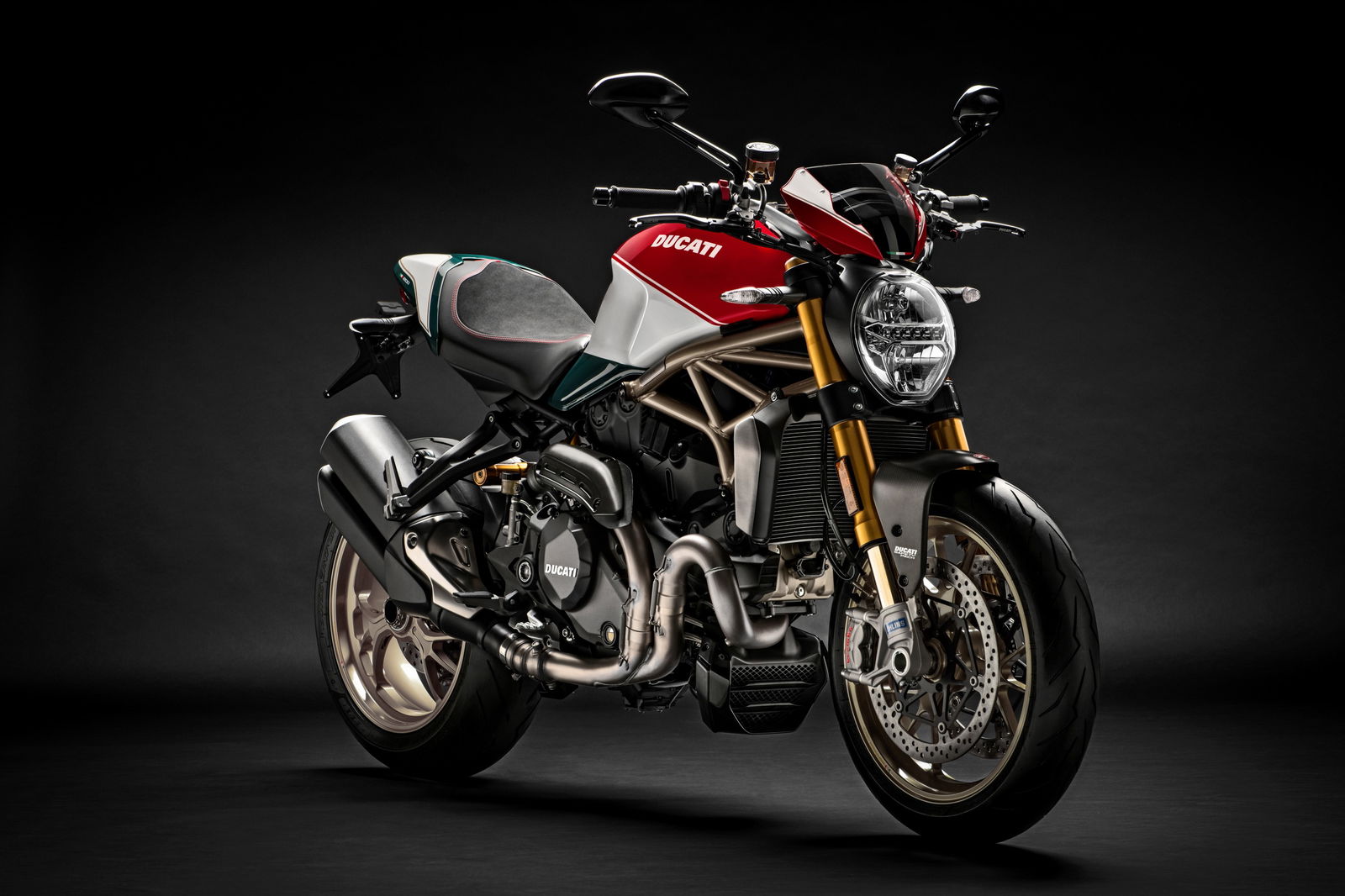
Ducati Monster 1200, 2014-2020
Along with the liquid-cooled 821, an all-new liquid-cooled 1200 Monster was introduced in 2014, replacing the old air-cooled 1100.
At its heart was a detuned 133bhp version of the 1198cc Testastretta L-twin already used in the Multistrada and Diavel but, with considerably less power than both and a slightly more laid-back, almost cruiser attitude, the big Monster, though decent, was considered to have lost some of its sporting edge (although an ‘S’ version, with 143bhp and better suspension, improved things).
A wild 2016 Monster 1200R with a full 160bhp, Ohlins suspension, revised geometry and more, however, proved a true track weapon in (albeit one costing in excess of £15,000) and that bike today is considered something of a classic, while in 2017 the base and S versions were updated to become sportier with a shorter swingarm, revised posture and power boosted to 148bhp.
Today, a 2017 Monster 1200S, which is arguably the best of the breed, will cost between £7,500 and £9,500. But the loony, mouth-watering R remains well over £10K. Monsters have never been so mad.
.jpg?width=1600)
Ducati Monster, 2021-date
For 2021 Ducati made the biggest changes to its Monster since the launch of the original in 1993. The 1200, 821 and entry-level 797 models were dropped all replaced by a single, all-new model, simply called the Ducati Monster.
Out, too, went the previously characteristic tubular steel trellis frame, replaced by a new aluminium twin spar design. The engine was new, too, being the liquid-cooled, 937cc V-twin already used in the Supersport and Hypermotard. There was also new styling, updated electronics, a slick new TFT dash and more.
For 2023 an additional version of the new Monster was added, the Monster SP, with uprated chassis components including Ohlins suspension and Brembo Stylema brakes, with the result also being slightly lighter and with a 20mm taller seat.
What to expect from the next Ducati Monster
Given the success of the Monster family over the last 30 years (it’s Ducati’s most popular and best-selling model, ever), further updates and variants are certain in the future.
